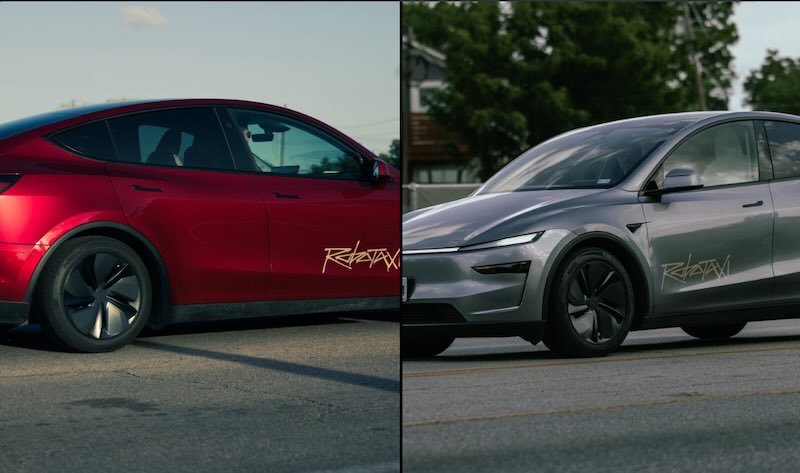Tesla’s long-awaited Robotaxi service has finally launched, and the initial reviews are rolling in from those lucky enough to experience autonomous ridesharing firsthand. However, early impressions suggest Tesla’s Robotaxi might not represent the quantum leap in self-driving technology many anticipated. Instead, it appears to be an incremental improvement over existing Full Self-Driving capabilities — though with some intriguing adaptive features that hint at the service’s potential.
AI Driver, autonomous driving reviewer put Tesla’s Robotaxi through extensive testing, hailing the service 16 times in a single day to evaluate its performance across various scenarios. Results were both reassuring and somewhat predictable — system behaved remarkably similarly to the current FSD v13 that Tesla owners already experience in their personal vehicles.
This finding challenges expectations that Tesla would deploy a significantly upgraded version of its autonomous driving stack for the Robotaxi service. Many observers assumed the company would launch with something comparable to FSD v14 or at least a substantial upgrade similar to the transitions from v11 to v12 or v12 to v13. Instead, Tesla’s Robotaxi appears to be running what could generously be called v13+ — essentially the same core technology with minor refinements.
Despite the overall similarity to existing FSD software, Tesla’s Robotaxi did demonstrate at least one notable improvement in everyday driving scenarios. While standard FSD v13 occasionally fails to detect speed bumps and maintain appropriate speeds, Robotaxi consistently identified and responded to every speed bump encountered during testing.
This enhancement suggests Tesla has been fine-tuning specific aspects of the driving experience for commercial deployment. Speed bump detection might seem trivial, but it’s exactly the kind of refinement that matters for passenger comfort and safety in a ride-hailing context.
Perhaps the most revealing aspect of Tesla’s Robotaxi testing involved its response to uncertain driving conditions. When approaching a parking lot with unusual surface coloring, the system hesitated for approximately five seconds before Tesla’s remote intervention system automatically assumed control. AI represents a critical component of any viable Robotaxi service — knowing when to seek human assistance rather than proceeding with potentially risky maneuvers.
The decision-making process behind these interventions remains opaque. It’s unclear whether Tesla employs human operators monitoring multiple vehicles simultaneously or relies on AI systems to determine when remote assistance is necessary. Ambiguity highlights one of the fundamental challenges in scaling autonomous vehicle services — creating reliable escalation protocols that can handle edge cases without compromising safety or efficiency.
What happened next during the testing proved particularly intriguing. When the reviewer hailed Tesla’s Robotaxi twice more at the same location that had previously triggered remote intervention, the system navigated the parking lot smoothly without hesitation. Behavior suggests the service incorporates some form of rapid learning or adaptation mechanism, allowing it to apply lessons from previous encounters to similar situations.
Whether this represents genuine machine learning happening in real-time or simply updated mapping data being pushed to the fleet remains unclear. However, the ability to quickly adapt to previously challenging scenarios could prove essential for Tesla’s Robotaxi service as it expands to new markets and encounters increasingly diverse driving conditions.
These initial findings paint a picture of Tesla’s Robotaxi as an evolutionary rather than revolutionary step forward in autonomous driving. While the service demonstrates operational viability and includes thoughtful refinements over consumer FSD, it’s not the dramatic technological leap some might have expected from Tesla’s first commercial autonomous vehicle deployment.
For Tesla, this measured approach makes business sense. Launching with proven technology reduces risk while allowing the company to gather valuable real-world data and refine its systems based on actual passenger experiences.Remote intervention capabilities and adaptive learning features provide safety nets that could prove crucial as the service scales.
Related Post
Tesla Robotaxi Faces Steering Issues and Operational Problems on Launch Day
Tesla vs Waymo: Kyle Vogt Explains the Real Robotaxi Divide That Matters Most
Tesla Model Y Completes First Fully Autonomous Vehicle Delivery from Factory to Customer Home
